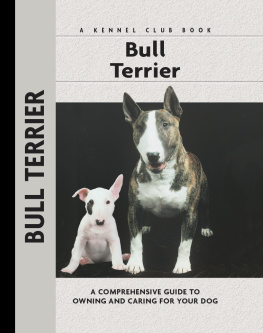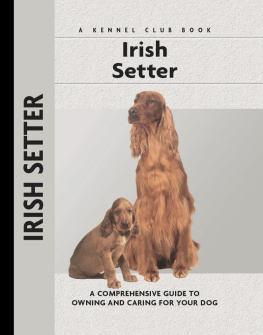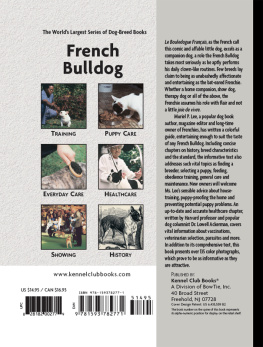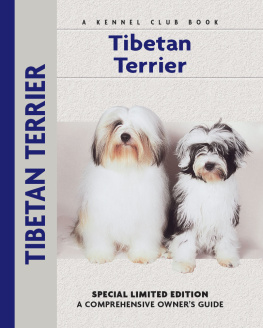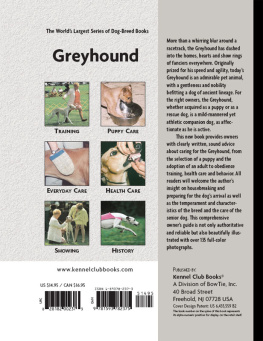Physical Characteristics of the
St. Bernard
(from the American Kennel Club
breed standard)
Head: Like the whole body, very powerful and imposing. The massive skull is wide, slightly arched and the sides slope in a gentle curve into the very strongly developed, high cheek bones.
Muzzle: Short, does not taper, and the vertical depth at the root of the muzzle must be greater than the length of the muzzle. The bridge of the muzzle is not arched, but straight. The flews of the upper jaw are strongly developed, not sharply cut, but turning in a beautiful curve into the lower edge, and slightly overhanging. The flews of the lower jaw must not be deeply pendant.
Eyes: Set more to the front than the sides, are of medium size, dark brown, with intelligent, friendly expression, set moderately deep.

Nose: Very substantial, broad, with wide open nostrils, and, like the lips, always black.
Shoulders: Sloping and broad, very muscular and powerful. The withers are strongly pronounced.
Ears: Of medium size, rather high set, with very strongly developed burr at the base. They stand slightly away from the head at the base, then drop with a sharp bend to the side and cling to the head without a turn.
Neck: Set high, very strong and when alert or at attention is carried erect. Otherwise horizontally or slightly downward. The nape of the neck is very muscular and rounded at the sides which makes the neck appear rather short. The dewlap of throat and neck is well pronounced: too strong development, however, is not desirable.
Chest: Very well arched, moderately deep, not reaching below the elbows.
Back: Very broad, perfectly straight as far as the haunches, from there gently sloping to the rump, and merging imperceptibly into the root of the tail.
Coat: (Longhaired) Of medium length plain to slightly wavy. Usually, on the back, especially from the region of the haunches to the rump, the hair is more wavy. The tail is bushy with dense hair of medium length. Forelegs only slightly feathered; thighs very bushy.
Hindquarter: Well-developed. Legs very muscular.
Tail: Starting broad and powerful directly from the rump is long, very heavy, ending in a powerful tip. In repose it hangs straight down, turning gently upward in the lower third only, which is not considered a fault.
Color: White with red or red with white, the red in its various shades; brindle patches with white markings. The colors red and brown-yellow are of entirely equal value. Necessary markings are: white chest, feet and tip of tail, noseband, collar or spot on the nape; the latter and blaze are very desirable.
Coat:Roughs: dense and flat, rather fuller round neck, thighs and tail well feathered.
Size: The dog should be 27.5 inches minimum, of the bitch 25.5 inches. Female animals are of finer and more delicate build.
Hind legs: Hocks of moderate angulation. Dewclaws are not desired; if present, they must not obstruct gait.
Feet: Broad, with strong toes, moderately closed, and with rather high knuckles.
Belly: Distinctly set off from the very powerful loin section, only little drawn up.

Contents

Known as a search-and-rescue dog, the St. Bernard descended from the early working dogs of the Swiss Alps. Learn about Archdeacon Bernard de Menthon and his famous hospice, where the breed first gained recognition for its rescue skills, and follow the St. Bernards spread in popularity from the Alps to all over the world.

Multitalented, friendly, loyal and affectionate, the St. Bernard has the ideal disposition for a companion dog. Learn about the breeds personality as well as its physical characteristics, and explore the unique responsibilities of owning a massive breed. Breed-specific health considerations are also discussed.

Learn the requirements of a well-bred St. Bernard by studying the description of the breed set forth in the American Kennel Club standard. Both show dogs and pets must possess key characteristics as outlined in the breed standard.
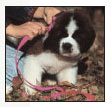
Find out about how to locate a well-bred St. Bernard puppy. Discover which questions to ask the breeder and what to expect when visiting the litter. Prepare for your puppy shopping spree. Also discussed are home safety, the first trip to the vet, socialization and solving basic puppy problems.

Cover the specifics of taking care of your St. Bernard every day: feeding for the puppy, adult and senior dog; grooming, including coat care, ears, eyes, nails and bathing; and exercise needs for your dog. Also discussed are the essentials of dog identification.

Begin with the basics of training the puppy and adult dog. Learn the principles of house-training the St. Bernard, including the use of crates and basic scent instincts. Enter Puppy Kindergarten and introduce the pup to his collar and leash and progress to the basic commands. Find out about obedience classes and other activities.

By Lowell Ackerman DVM, DACVD
Become your dogs healthcare advocate and a well-educated canine keeper. Select a skilled and able veterinarian. Discuss pet insurance, vaccinations and infectious diseases, the neuter/spay decision and a sensible, effective plan for parasite control, including fleas, ticks and worms.

Step into the center ring and find out about the world of showing pure-bred dogs. Heres how to get started in AKC shows, how they are organized and whats required for your dog to become a champion. Take a leap into the realms of obedience trials, agility, and tracking tests.

KENNEL CLUB BOOKS ST. BERNARD
ISBN 13: 978-1-59378-265-8
eISBN 13: 978-1-59378-963-3
Copyright 2004 Kennel Club Books An Imprint of I-5 Press A Division of I-5 Publishing, LLC
3 Burroughs, Irvine, CA 92618 USA
Cover Design Patented: US 6,435,559 B2 Printed in South Korea





